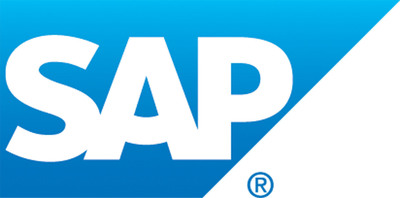WALLDORF, Germany, July 7, 2015 /PRNewswire/ -- Companies may
lose as much as US$30,000 per
employee per year due to inefficiency, a new study commissioned by
SAP SE (SAP NYSE) revealed today, but collaboration technology can
enable workers to connect and share information in real-time,
driving measurable business results to compensate for this loss.
These results and opportunities to improve line of
business-specific KPIs were found in an IDC-commissioned study* on
the business value of social solutions. According to the research,
workers are severely hampered by everyday tasks, including reading
and responding to email and searching for and gathering
information. This reflects a huge measurable cost in the
inefficiencies of work. However, social collaboration tools
like SAP® Jam™, a secure, cloud-based social software platform with
more than 17.5 million subscribers, can help facilitate faster,
more informed decisions and improve the quality of the work that is
critical to business success.

"Organizations should look to provide seamless experiences to
their users by deeply integrating collaborative applications within
existing enterprise systems and processes," said Vanessa Thompson, research director, Enterprise
Social Networks and Collaborative Technologies, IDC Research. "The
ability to link employees, partners, suppliers and customers
together in order to deliver right time information and context to
interactions is at the epicenter of competitive
differentiation."
Collaboration is especially important for the lines of business
in an organization, which face unique challenges and have stringent
KPIs to meet. As part of the study, qualitative research white
papers were developed for several lines of business — sales,
customer service, human resources and marketing — to summarize what
is most important to each and how collaboration platforms like SAP
Jam can help meet their KPIs. The study found social collaboration
platforms can meet line-of-business challenges in the following
ways:
- For human resources, speed up employee onboarding by
connecting new hires with recommendations for people, content and
training, and deliver intelligent filtering of appropriate training
and development information as well as detailed management of
personnel information.
- For customer service, facilitate an open and transparent
dialogue with customers throughout the lifetime of their
relationship with a company.
- For marketing, connect marketing teams with data from
business users, customers, partners or suppliers to help reduce
marketing costs and increase response time.
- For sales, connect internal teams from across the
company, ensuring rapid resolution of issues to speed sales cycles
and improve the quality of the customer interaction, all while
reducing costs.
Because it is a collaborative platform that works across the
business, SAP Jam can help to measurably drive real results, while
supporting the work processes and applications with work patterns
for each specific line of business.
"These last three years of fast growth and meaningful adoption
of SAP Jam has proven without any doubt that building highly
connected networks of employees, partners and customers can drive
business performance," said Sameer
Patel, senior vice president and general manager, Products
and GTM Enterprise Collaboration and Social Software, SAP.
"Executives at many of the world's leading organizations are now
leveraging social collaboration technology to drive growth, improve
customer satisfaction and reduce cost."
Read the IDC InfoBrief and view the infographic to learn more
about the potential business benefits enabled by SAP Jam for
organizations, and read specific reports for sales, customer
service, human resources and marketing lines of business.
For more information, visit the SAP News Center. Follow SAP on
Twitter at @sapnews.
Media Contact:
Janice Tsoules, SAP, +1 (650)
223-4817, janice.tsoules@sap.com, EST
*Source: IDC InfoBrief, sponsored by SAP, Harness the Value of
Collaboration, 2015
Any statements contained in this document that are not historical
facts are forward-looking statements as defined in the U.S. Private
Securities Litigation Reform Act of 1995. Words such as
"anticipate," "believe," "estimate," "expect," "forecast,"
"intend," "may," "plan," "project," "predict," "should" and "will"
and similar expressions as they relate to SAP are intended to
identify such forward-looking statements. SAP undertakes no
obligation to publicly update or revise any forward-looking
statements. All forward-looking statements are subject to various
risks and uncertainties that could cause actual results to differ
materially from expectations. The factors that could affect SAP's
future financial results are discussed more fully in SAP's filings
with the U.S. Securities and Exchange Commission ("SEC"), including
SAP's most recent Annual Report on Form 20-F filed with the SEC.
Readers are cautioned not to place undue reliance on these
forward-looking statements, which speak only as of their dates.
Logo -
http://photos.prnewswire.com/prnh/20110126/AQ34470LOGO
To view the original version on PR Newswire,
visit:http://www.prnewswire.com/news-releases/newsbyte-sap-study-social-collaboration-measurably-improves-business-value-and-helps-recover-sunk-costs-300109129.html
SOURCE SAP SE